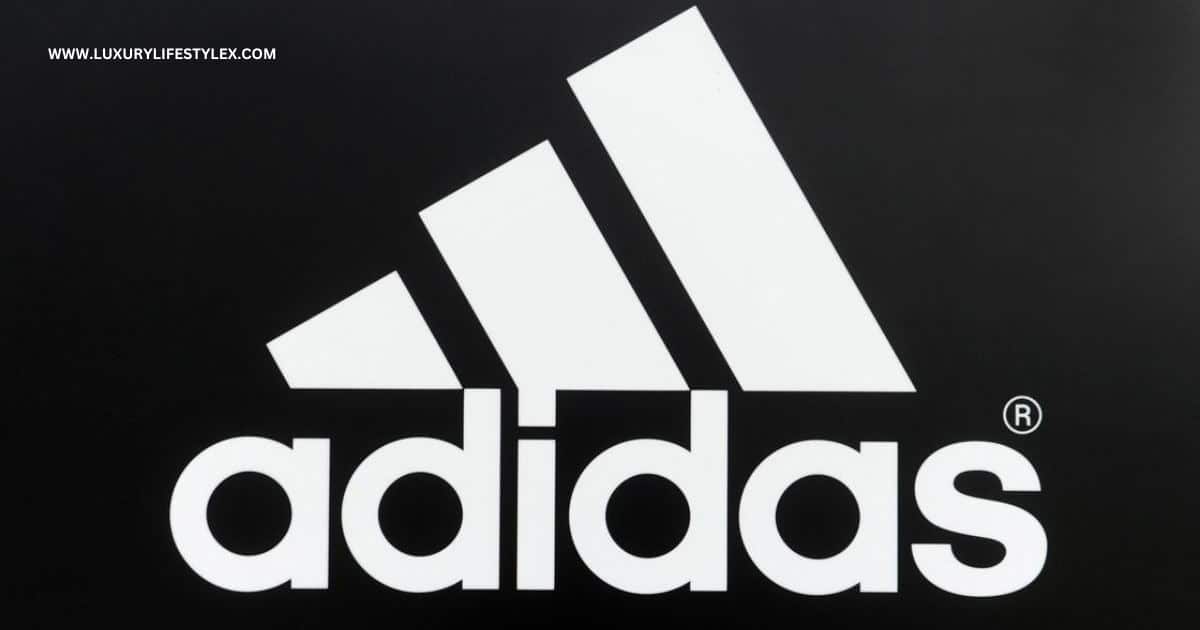Introduction
Coca-Cola’s history as an industry leader began in Atlanta, Georgia, where it evolved from its late 1800s origins into a global powerhouse savored by individuals across more than 200 countries. This article will examine the elements that have propelled Coca-Cola to the pinnacle of success, including its groundbreaking advertising initiatives and wise mergers and acquisitions. Alongside these triumphs, we’ll also consider the disputes and obstacles Coca-Cola has encountered.
The Birth of Coca-Cola
The narrative of when Coca-Cola was invented traces back to Dr. John Pemberton, an Atlanta pharmacist who concocted a sweet syrup initially aimed at alleviating headaches. When this syrup, infused with coca leaf and kola nuts for caffeine, was combined with carbonated water at Jacobs’ Pharmacy, the inaugural class of Coca-Cola made its debut on May 8, 1886. The brand’s distinctive logo, with its recognizable double ‘C’s, was the brainchild of Dr. Pemberton’s associate, Frank M. Robinson. Following Dr. Pemberton’s demise, Asa Griggs Candler, an astute Atlanta entrepreneur, saw the potential in the beverage and secured the company’s future by acquiring the remaining stakes.
The Birth of The Coca-Cola Company
The Coca-Cola Company was officially established by Asa Candler in 1892, heralding a new chapter for the brand. The drink swiftly captured the American market; by 1895, it was available nationwide. In 1919, Ernest Woodruff took ownership, and his progeny would later elevate Coca-Cola to a prominent international brand. That same year, Coca-Cola solidified its status in the beverage sector by going public on the New York Stock Exchange with the ticker symbol K.O.
International Expansion and Competition
Coca-Cola’s venture into international markets began in the 1920s, with its first overseas shipment to Cuba in 1899. However, it was during World War II that Coca-Cola’s global footprint expanded dramatically. The company’s president, Robert Woodruff, was committed to providing American troops with a taste of home, which spurred a surge in international demand. To satisfy this growing appetite, Coca-Cola forged alliances with bottlers and distributors across the globe and now operates in over 200 countries and territories.
Since its inception, Coca-Cola has consistently been challenged by competitors such as Pepsi and Dr. Pepper. These rivals emerged around the same era and have since been locked in intense competition, often acquiring smaller beverage brands to bolster their positions. Despite these challenges, Coca-Cola has maintained its status as a global frontrunner in the carbonated soft drink industry.
The Coca-Cola System
A pivotal element in Coca-Cola’s swift growth is its distinctive franchise system, the Coca-Cola System, which has been instrumental since 1889. Coca-Cola manufactures syrup concentrate and sells it to independent bottlers globally, who then manage the local production and distribution. With over 900 bottling plants worldwide, the Coca-Cola System ensures the daily delivery of 2 billion beverage servings, allowing the company to safeguard its secret formula while mitigating direct competition.
Evolution of the Coca-Cola Product
Coca-Cola has periodically revised its ingredients in response to consumer tastes, market dynamics, and cost factors. A significant alteration was the exclusion of cocaine from its original formula. In the 19th century, cocaine was legally utilized for medicinal purposes and was a component of the original Coca-Cola recipe. Recognizing the addictive nature of such substances, Coca-Cola responsibly removed cocaine from its formula by 1929.
In 1985, Coca-Cola faced a major controversy when it decided to change the formula of its flagship product. The introduction of ‘New Coke’ was an attempt to compete with Pepsi, which was gaining market share. However, the response from consumers was overwhelmingly negative, sparking a public outcry. Just 79 days after its launch, Coca-Cola reintroduced the original formula as ‘Coca-Cola Classic’ to appease its loyal customers. The New Coke incident taught Coca-Cola a valuable lesson about consumers’ solid emotional connection with their brand and understanding their preferences.
In recent years, Coca-Cola has tried diversifying its product line with healthy alternatives and catering to changing consumer tastes. For example, Coca-Cola Zero Sugar was introduced as a low-calorie alternative to the original Coca-Cola. The company has also experimented with different flavors and variations, such as Coca-Cola Cherry, lemon, lime, vanilla, and ginger, to appeal to more consumers.
The Coca-Cola Growth Strategy
Coca-Cola has outlined a comprehensive growth strategy to sustain its success and maintain its position as a global leader. This strategy focuses on several vital objectives the company aims to achieve in the coming years.
Firstly, Coca-Cola recognizes the immense growth potential in developing markets and local cultures. The company aims to expand its presence in these markets, where commercialized beverages have yet to reach their full potential. By diversifying its brand portfolio and introducing new products tailored to local tastes, Coca-Cola aims to capture the attention and loyalty of consumers in these emerging markets.
Secondly, Coca-Cola intends to refine its marketing strategy by optimizing its brand portfolio and consolidating its products into fewer master brands. By streamlining its product offerings, Coca-Cola can focus its efforts and resources on strengthening its core brands and creating new innovative products. This strategic consolidation allows for better brand management and more effective marketing, aligning with the company’s Coke marketing strategy.
Additionally, Coca-Cola plans to undergo a digital transformation, reshaping its organizational structure into a networked organization. This involves reorganizing support and operational teams to improve efficiency, collaboration, and support across the company. By leveraging technology and data, Coca-Cola aims to enhance decision-making processes and drive innovation.
Another crucial aspect of Coca-Cola’s growth strategy is brand building, focusing on Coca-Cola branding and brand identity. The company recognizes the importance of world-class marketing and advertising in driving brand awareness and consumer engagement. By allocating resources strategically and delivering targeted marketing campaigns, Coca-Cola aims to strengthen its brand image and connect with consumers on a deeper level.
Furthermore, Coca-Cola underscores the role of innovation in propelling its growth. The company is committed to increasing the frequency consumers enjoy their beverages by introducing innovative products. By broadening its innovative offerings and launching them into the market, Coca-Cola strives to seize new opportunities and remain at the forefront of shifting consumer tastes.
Digital transformation is also a cornerstone of Coca-Cola’s growth strategy. Recognizing the power of data, the company is embracing a digital transformation to harness data analytics and digital tools for enhanced decision-making and operational efficiency. Through this digital transformation, Coca-Cola is determined to maintain its agility and respond proactively to the ever-changing market dynamics.
Lastly, Coca-Cola’s strategy for growth includes meticulous revenue growth management. By scrutinizing market trends and consumer behaviors, the company is poised to pinpoint sales growth opportunities and strategically allocate resources to the most lucrative areas. This data-driven revenue growth management approach enables Coca-Cola to concentrate its efforts on markets, product lines, and consumer segments that offer the most significant potential for expansion.
The Power of Advertising
Coca-Cola’s success can be partly ascribed to its innovative marketing strategy and impactful Coca-Cola advertising strategy. The company has consistently challenged marketing norms, crafting campaigns that resonate deeply with consumers and make an enduring mark. Coca-Cola’s advertising initiatives have not only heightened brand awareness but have also influenced popular culture globally.
From its inception, Coca-Cola recognized the significance of advertising and channeled substantial resources into Coca-Cola marketing. Asa Griggs Candler, an early proprietor of Coca-Cola, dedicated considerable budgets to advertising, propelling the brand to widespread acclaim. Over the decades, Coca-Cola’s advertising budgets have swelled, with the company now investing around 10% of its revenue into Coke marketing endeavors.
One of the critical aspects of Coca-Cola’s advertising triumph is its emphasis on positivity and human connection, which is central to the Coca-Cola brand identity. The company’s advertisements are crafted to stir emotions and instill a sense of well-being and affinity with the brand in consumers. Coca-Cola has adeptly cultivated an image of the brand as an emblem of joy, camaraderie, and unity.
Coca-Cola’s advertising campaigns frequently tap into the allure of celebrity endorsements and popular culture to captivate consumers’ attention. The brand has partnered with many high-profile celebrities, athletes, and pop culture luminaries, such as Elvis Presley, Aretha Franklin, and Magic Johnson. By aligning itself with these influential personalities, Coca-Cola bolsters its status as a cultural heavyweight and connects with a broad spectrum of audiences.
Coca-Cola has also seamlessly integrated itself into various forms of media, including movies, television shows, and music, evoking a sense of nostalgia. The brand has been featured in iconic films like King Kong and E.T. the Extra-Terrestrial, and its products have appeared in popular T.V. series like Stranger Things. Coca-Cola’s presence in pop culture has solidified its status as an integral part of American history and has helped it maintain a strong brand identity.
In addition to traditional advertising channels, Coca-Cola has embraced the power of social media, engaging with its global audience on platforms like Facebook, Twitter, and YouTube. Coca-Cola shares promotional content, user-generated content, and positive brand messages through its social media channels. The company has also leveraged social media to launch creative campaigns, encouraging consumers to participate and share their Coca-Cola experiences.
Coca-Cola’s advertising success can also be attributed to its brand marketing prowess and ability to adapt and evolve with changing consumer preferences and market trends. The brand has introduced new flavors, variations, and healthier alternatives to cater to diverse consumer needs. By staying attuned to consumer demands and maintaining its innovative spirit, Coca-Cola has remained relevant and influential in advertising.
Growth through Mergers, Acquisitions, and Partnerships
Strategic marketing efforts, including mergers, acquisitions, and partnerships, have significantly influenced Coca-Cola’s growth and global reach. These initiatives have allowed the company to expand into new markets, acquire popular brands, and strengthen its position in the food and beverage industry.
Throughout its history, Coca-Cola has pursued mergers and acquisitions to grow and diversify, answering the question of ‘what does Coke own’ with a broad portfolio. The acquisition of Minute Maid in 1960 allowed Coca-Cola to enter the juice and soft drinks market, expanding its product portfolio. Over the years, Coca-Cola has continued acquiring various companies, including Barq’s, Odwalla, Fuze Beverage, Honest Tea, and ZICO, tapping into new beverage categories and leveraging these brands’ existing popularity and distribution networks.
Coca-Cola has also formed strategic partnerships with other major companies to strengthen its market presence and distribution capabilities, including sponsorships that testify to its marketing strategy. One of the most significant partnerships is with McDonald’s, which exclusively sells Coca-Cola products in its restaurants worldwide. Coca-Cola has also established partnerships with venues such as stadiums, theaters, and concert halls, where Coca-Cola products are exclusively sold, driving sales and solidifying its position as a trusted and preferred beverage provider.
In recent years, Coca-Cola has expanded its reach into other segments of the food and beverage industry through strategic acquisitions, such as the purchase of Costa Coffee in 2018, which made Coca-Cola the owner of the second-largest coffeehouse chain in the world after Starbucks. These acquisitions have allowed Coca-Cola to diversify its offerings and capture new opportunities in the evolving consumer landscape.
Controversies, Regulation, and Criticism
Despite its remarkable success, Coca-Cola has not been without its share of controversy, regulatory challenges, and criticism. The company has faced scrutiny in consumer health concerns and environmental impact.
One of the major concerns surrounding Coca-Cola is the high sugar content of its beverages, which has been linked to health issues such as obesity, type 2 diabetes, and tooth decay. As a leading soda manufacturer in the beverage industry, Coca-Cola has faced criticism for its contribution to these health problems. The company has recently introduced low-calorie and sugar-free alternatives, such as Coca-Cola Zero Sugar, to cater to consumers’ changing preferences and promote healthier choices.
Another area of concern is Coca-Cola’s environmental impact, particularly its contribution to plastic waste. Coca-Cola is one of the world’s largest producers of plastic bottles, and improper disposal of these bottles has led to significant environmental pollution. Environmental organizations have called on Coca-Cola to take more responsibility for its plastic waste and to implement more sustainable packaging solutions. Coca-Cola has addressed these concerns, including lightweighting its bottles and introducing plant-based packaging materials. However, critics argue that more needs to be done to reduce the company’s environmental footprint.
Coca-Cola has also faced regulatory challenges in various markets, including regulations on advertising to children, labeling requirements, and taxation of sugary beverages. These regulatory measures aim to promote public health and reduce the consumption of unhealthy products. Coca-Cola has responded by adapting its marketing strategies and product offerings to comply with these regulatory challenges while continuing to innovate and cater to consumer preferences.
Despite the controversies and challenges, Coca-Cola remains committed to addressing these issues and driving positive change. The company has set sustainability goals, such as reducing its carbon footprint and increasing the use of recycled materials in its packaging. Coca-Cola has also invested in community initiatives, education programs, and partnerships to promote health and environmental sustainability.
Conclusion
Coca-Cola’s success and evolution can be attributed to various factors, including its innovative advertising campaigns, strategic mergers and acquisitions, and commitment to addressing societal and environmental challenges. The company’s ability to adapt to changing consumer preferences and market dynamics has allowed it to maintain its position as a global leader in the beverage industry for over 125 years. Despite its controversies, Coca-Cola continues to evolve and drive growth through its comprehensive strategic plan and commitment to sustainability. With its iconic brand and widespread recognition, Coca-Cola remains a symbol of American culture and a global phenomenon.
FAQs
Q1. What is Coca-Cola’s origin?
A1. Coca-Cola originated in Atlanta, Georgia, United States, in 1886.
Q2. How did Coca-Cola become a global icon?
A2. Coca-Cola’s global success can be attributed to its effective marketing strategies, iconic branding, and widespread distribution network.
Q3. What are some key milestones in Coca-Cola’s history?
A3. Key milestones in Coca-Cola’s history include its invention in 1886, the introduction of the iconic contour bottle in 1915, and globalization efforts starting in the 20th century.
Q4. How does Coca-Cola maintain its market dominance?
A4. Coca-Cola maintains its market dominance through continuous innovation, strategic partnerships, and targeted marketing campaigns that resonate with diverse consumer demographics.
Q5. What sustainability initiatives has Coca-Cola undertaken?
A5. Coca-Cola has implemented various sustainability initiatives, including water stewardship programs, packaging recycling efforts, and commitments to reduce carbon emissions across its supply chain.










